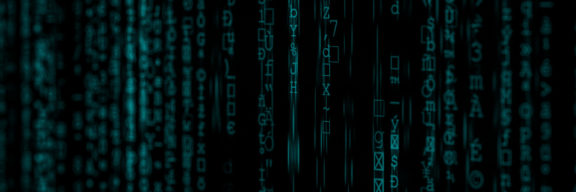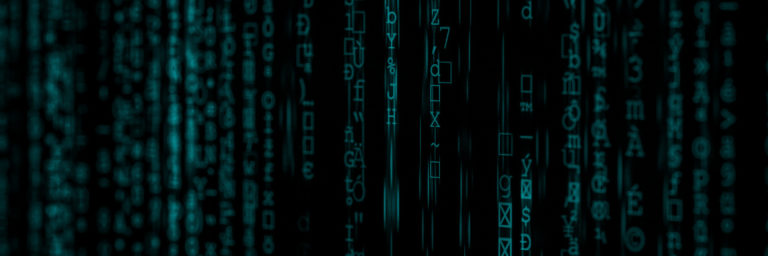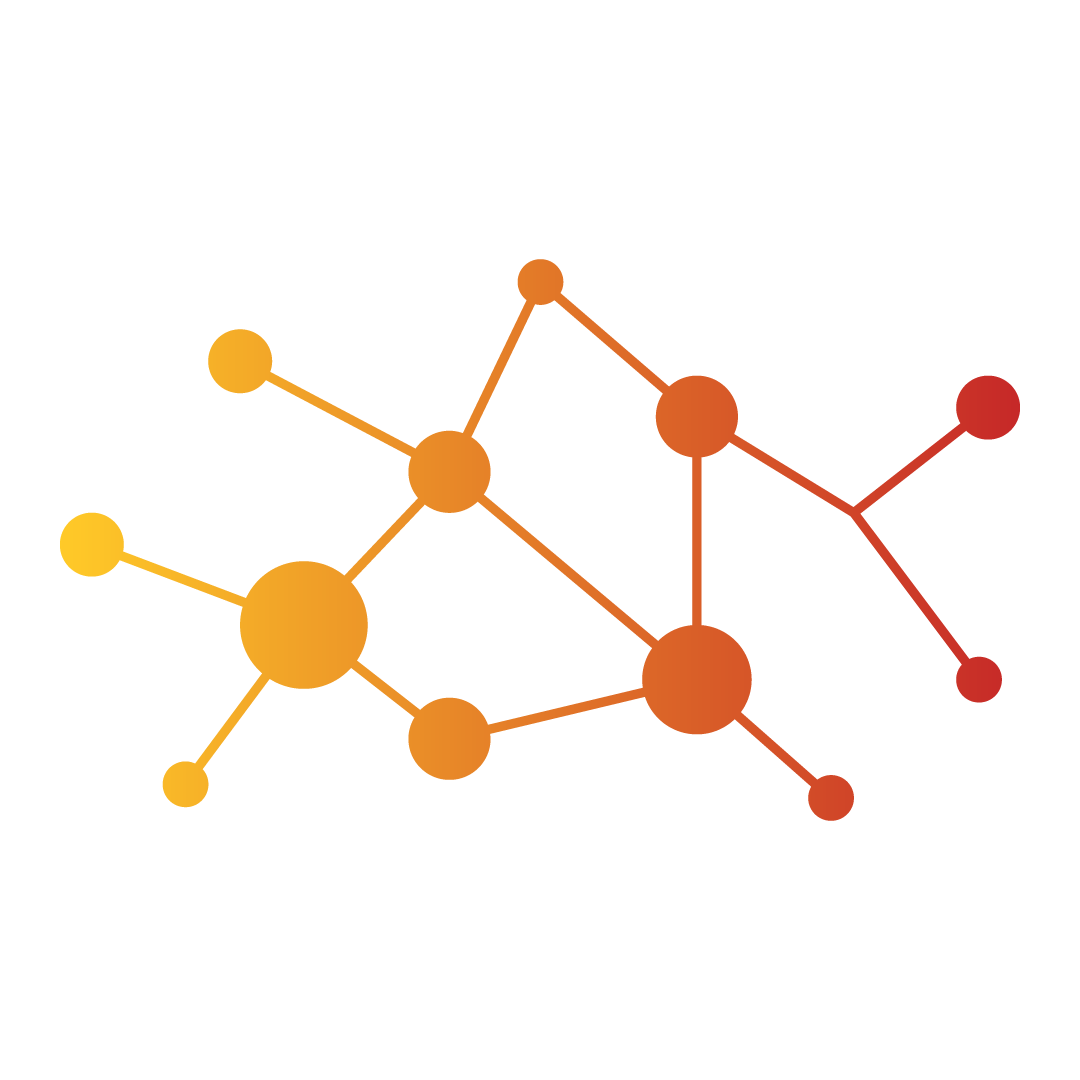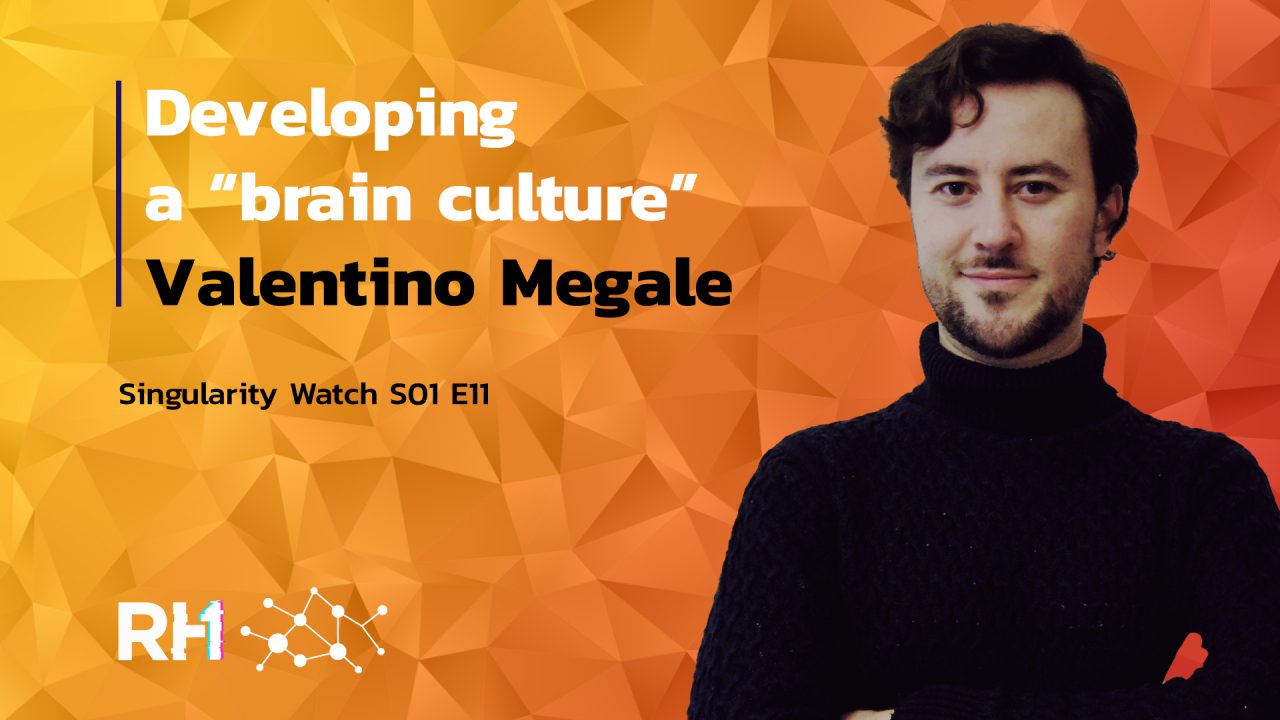Our journey today takes us to the medical domain again. Let’s meet Valentino Megale, a biologist and tech entrepreneur focused on digital health and mental well-being.
In 2017, he founded Softcare Studios, a digital health startup specialized in developing virtual reality solutions for stress management and therapy education in patients undergoing medical treatments.
What’s the great opportunity here? How this wonderful “illusion” we call Virtual Reality can have such a real impact? Come with us!
Oli: Your career started in academia, researching in pharmacology, organic chemistry, and molecular biology in the fields of oncology and neuronal metabolism. Then, at a certain point, your journey crossed and went into VR. So how did that happen exactly? How did you get there?
Valentino: Basically, I started in the classical wet lab, synthesizing drugs with pharmaceutical activity, and then, after my Ph.D., which was focused on neuropharmacology, I decided to explore how digital technologies can support patients and improve their therapy experience without the use of drugs. So that was the moment where, with our team, with my co-founders, we also started to dip our knowledge in virtual reality because it represents the perfect tool to address the neglected needs of patients without the administration of the traditional pharmaceutical compounds.
Oli: So it was basically born from the fact of trying not to go “the drug way.”
Valentino: Exactly. At the early beginning of our company, of SoftCare studios, which we founded in 2017 in Rome, we have been challenged by pharma company Merck during a call for projects on improving patients’ experience and patients’ adherence to therapy with digital technologies. So we are a team of medical researchers. I’m from neuropharmacology, and there are other guys from biomedical engineering and software development. They always face how to use technology in healthcare. We have been a perfect mix to understand how to start with digital instead of the pill and support patients to make their patients’ journey better through hospitalization towards better health outcomes.
Oli: Can you elaborate a little bit on kind of the types of needs you’re responding to? What type of people could maybe need this?
Valentino: Sure. So, at SoftCare studios, we decided to target at the very beginning pediatric patients and address their neglected needs. As I said before, during patients’ journey, there are many neglected needs linked to their experience, like pain perception, clinical anxiety, and even social isolation. So all these conditions have a huge impact on how patients deal with their daily challenges, what are their attitudes towards the doctors and the hospitals, and so basically, the stress conditions are also a risk factor for pure adherence to therapy. So if patients experience pain, anxiety, and isolation, they are more likely to be less adherent to therapy. This is something that impacts the quality of life of patients but also causes delays in the work routine of doctors. So, providing a solution able to make patients more comfortable while playing the role of patients in the hospital helps them better feel, improves their quality of life, but it also speeds up and facilitates the work of doctors. This is a win-win solution that we decided to implement using immersive technologies because all these stressful conditions depend on what space a patient is supposed to stay in and how he spent his time in the hospitals’ space. We don’t like to be in the hospital, and we spend not exactly the time we’d like to spend in a hospital. With virtual reality, we can change what space they perceive around them, and we provide a digital solution, a drug-free, non-invasive solution to help them go beyond the walls of hospitals with their mind, even if it is not possible to do that with their bodies. That’s a great tool for a patient’s journey.
Oli: Yeah, that’s awesome. One of the things that are still really lacking in healthcare is the “soft” aspect.
Valentino: Exactly. It’s perceived as secondary, but it’s not secondary to the patient. And the patients would like to perceive less pain, less anxiety, and be less isolated. It helps, and it also helps the whole hospital to perform better and reach faster and better health outcomes. So that’s why we called ourselves SoftCare.
Kavya: For a longer stay at the hospital, this could be a real lifesaver. You know, you can’t go anywhere, so you can just visit through VR any places or whatever doctors prescribe. But how many hours can a person stay in VR? My key question here is: does it differ when it comes to surgical or a medical use case from a traditional “I’m just playing VR game” kind of thing?
Valentino: Obviously, we deal with patients, not standard users, so they have a very specific profile of fragilities, of limitations, on the motor side, on the sensory side, and cognitive side. It’s very important to design spaces that fit this fragility profile and never stress this fragility, so spaces that respect the limitations of patients and these users. When you play at home with your VR device, you can play all the time, you can play even until the end of your battery, that’s up to you. But in the case of the hospitals, we suggest. We discuss with doctors, with psychologists, that the best approach is to use virtual reality exactly when it can provide a meaningful value, so they don’t play, they don’t use virtual reality more than half an hour or 40 minutes, and they use virtual reality exactly when the immersive “distraction” can provide a meaningful value to contrast anxiety, pain, and isolation. So it’s something that should be administered to the end-users and not just provided as an additional way to develop an addiction to something digital. It’s not just something to use your time, but to use your time better in specific moments. So, for instance, during chemotherapy, we are also working with young children in oncology, so our doctors and partner hospitals use virtual reality during chemotherapy, during a blood test, before scary treatment, or after scary and painful treatments. So they use it with a purpose, which is the main difference from the general consumer use of virtual reality.
Oli: With regards to rehabilitation in VR, I’d like to expand that a bit. As somebody who works in the field of rehabilitation myself, I’ve always interpreted the word to indicate that we’re talking about giving back abilities. We’re kind of teaching people to be independent and self-sufficient. Do you think, from the neurological and psychological point of view, there is an increase in effectiveness when you relearn skills, whether they’re motor skills or emotional awareness or anything like this? Is there any evidence on this yet?
Valentino: I think that rehabilitation is probably one of the best use cases of VR because it provides two kinds of values, which are motivation on one side and data collection on the other. Virtual reality is not only providing content, but it’s first of all user tracking. So it’s sensors and data. And that’s great that you can virtualize the rehabilitation protocol providing a space that is engaging and motivating for the user, and this is very important because rehabilitation is all about repetition of boring movement in time, probably in a boring space. So, if you provide a suitable space for the users, they are more adherent to the rehabilitation protocol, and they reach better and faster goals in the rehabilitation process. You can also monitor the motor performances of users and return this data to the specialist, so he or she can have an additional tool to monitor even remotely a user during the rehabilitation process. It’s great because you can provide a better experience and study that experience from the inside. You can have a lot of data about that, and there is a lot of researchers evidence that is working in this field. A particular application field is interesting when virtual reality is deployed to enhance traditional rehabilitation even with exoskeletons. Exoskeletons are used to rehab the muscular movements of a person, but you are really not engaging the brain part of that process. People are supported by the exoskeleton, but the brain just gets used to being dependent on it. In a lot of researches, they are connecting the exoskeleton use and the virtual reality applications to improve the whole process and engage the whole person, body and mind at the same time.
Oli: Another point I’m wondering about is related to the idea of gaming. It’s often said that when you’re playing, and you’re very motivated and immersed in a situation, whether it’s in VR or outside, the experience is going to improve the memory retention and the quality of what you learn in some way. Do we have any evidence on that?
Valentino: There are interesting researches in this field because, basically, the best way to learn something is to learn it in first-person. Clearly, it’s not always possible to learn some new things in person, but you can simulate these in-person conditions with an immersive presence with virtual reality. So, yes, there is emerging and growing evidence about the positive impact of virtual reality education for boosting memories, relearning movements, and relearning spatial navigation. This is very important: you can watch something on your 2D screen, but it’s very different to navigate the space. I can speak with you, and the communication is more complex. You have metalanguage involved right now. This is something that provides more complexity and more value to the whole process. So I feel engaged, and I will remember this experience just like a real interview, unlike a Zoom interview, a classical one.
Oli: There’s a lot of work on phobias, too. How does that work in VR?
Valentino: That’s probably one of the oldest applications of VR together with pain management. Dr. Hunter Hoffman started the study in the 90s. Everything starts from exposure therapy: you can overcome something that scares you by just getting familiar with something approaching that, with little steps closer and closer. Obviously, in reality, in our physical reality, this is also linked to risk. Just imagine being scared by spiders, so you need to touch them, which can be a risk for you. But you can do the same with an exposure protocol in virtual reality with the perception of being in front of a real spider. And the interesting thing that Dr. Hoffman and the other researchers with him showed is that what you learn in virtual reality, that sense of being familiar with that thing, with that spider, for instance, can be moved into your daily lives. So, basically, if you’re not scared by spiders in virtual reality, you are also less scared by spiders in your real physical reality. You can do that at zero risks, and you do that wherever you are. So it’s also a way for therapies to deploy scalable solutions of exposure therapy for a lot more patients than in the past.
Kavya: How critical is it to train people in a standardized manner, especially when we’retalking about the kind of therapies you’re providing? And you know what should be the approach to then standardized such a training? Because, you know, you guys are researching and investigating, and then what happens when you have to scale up?
Valentino: I think that the best thing is when patients do not see technology. Technology should not be invasive, so basically, patients should enjoy the content and focus on it. So it’s really important to train patients about how to use general-purpose virtual reality. This is useful because they should not be concerned with user usability, the controller of your headset, etcetera. This is something that should be invisible or less perceivable. They should be comfortable with the technology and then start with the content.
The initial training is important for the patient in order to optimize the intervention, the virtual intervention. But this is also very important for doctors and health operators because they have a great responsibility and make patients open to using virtual reality. This is also very important for children because if doctors are open to technology, the way they provide technology to children impacts how children perceive technology if they perceive it in a very difficult way in a very complex way. Children, who are patients and who are hospitalized, they don’t want more complexity in their life. So yes, we always start from the training of the hospital personnel, and then we move to the training of the users. But it’s very important to create an ecosystem that knows how to use technology.
Kavya: I was wondering, when we started the XR Safety Initiative, one of our senior advisers, Ibrahim Baggili, shared his research with me where people could actually cause cyberattack-type of scenario and overlay things on top of what you’re seeing in VR. Now, these novel cyberattacks are not really there in the wild but are inevitably coming. I know it sounds like a gigantic question, but in your opinion, how do we prepare ourselves for these unintended consequences or novel risks or even cybersecurity-related risks? And so what are your thoughts, you know, in the context of Medical XR?
Valentino: Medical XR is still a niche, so probably that’s why huge or significant cyberattacks have not hit it at the moment. It’s very limited in its operations, but in time, when the market will grow, and the adoption of this technology will grow, it will probably become more and more interesting to hackers to introduce dangerous content. So it’s definitely a possibility. I also joined the conversation of XRSI because it’s important to start to discuss it and define what risk could be and how to develop, how to assess them, and how to develop countermeasures in time. Basically, as you say, a lot of people say, “Hey, there are no past examples of attacks, so we don’t need to be concerned about it”. That’s that’s not true because we know that the best way is to anticipate the potential risk. So a conversation, a professional conversation to anticipate the risk is fundamental, and probably we will learn a lot from the first attacks because we will probably not be able to countermeasure them at the beginning, but yes, it’s better than starting completely from zero and without frameworks, because XRSI is going to provide the framework that is public so everyone can access and understand are the risk maybe change its attitudes and behaviors towards technology.
Kavya: Yeah, and I just want to thank you for contributing to this framework. What Valentino is referring to is XRSI is currently developing an XR privacy and safety framework for XR and spatial computing domain. So hopefully, Valentino, we’ll get somewhere with our proactive measures and give to the industry sub solutions around this. So thank you for being part of that.
Oli: Let’s get a bit philosophical. If we wanted to kind of define virtual reality, we could, in a very crude way, define it as an illusion, a sensory illusion. But that makes us think of something that has no consequences on reality. In your field, this is clearly not the case. But what is actually being transferred from the virtual to the physical world?
Valentino: It’s very real. Virtual reality is based on an immersive illusion. That means that basically, the separation gap between the observer and the content is almost zero. And in that condition, if you are able to design and provide sensorial keys in the right consistent and coherent way, you’re able to trick your brain into believing it is something real, a virtual environment becomes real. But what does it mean? It does mean that the user is not engaged with the content only on an emotional level, just like when we watch a movie. The virtual content, the realism perceived by the brain, is able to trigger even cognitive, motor, and physiological effects in our body. It’s able to change processes like neuroplasticity processes in our brain, it’s able to have our pain perception. You are familiar with the quote that “a mathematician is a machine that converts coffee into equations”. But even the same for the engineer, “he converts coffee in the code”. So basically, virtual reality is a sort of process technology solution that converts virtual stimuli into physical reactions, and in those physical reactions, we have the reason for using virtual reality in healthcare because, yes, we can use virtual reality to induce specific reactions that are linked in patients experience, that are meaningful to reach the goals of the therapy.
Oli: I think it might be useful to explain that what’s meant by neuroplasticity: the brain actually physically changes the way it actually appears. So if you open it up, it would actually look different, depending on what you’ve learned or whatever you’ve been doing, more than any other part of the body.
Valentino: it’s similar to our muscles, so basically, if you use a specific skill, if you even experience for a longer time a specific emotion, the area of the brain that is involved in that specific condition also grows, it’s more stimulated than others. And that’s true, for instance, for pain. So the brain area involved in pain perception can be overstimulated. You can use virtual reality, maybe to hack that process, and basically, you reduce our cognitive perception of pain because pain is basically 80% cognitive and 20% physiological. So, breaking that cognitive parts helps, for instance, to reduce the pain perception in users, even during very painful treatments. That was also the case of the Snow World, the first pain management content developed by Hunter Hoffman. He was working with patients with skin burns on their bodies, and they were not sensitive to pain management. But they managed to reduce pain in a meaningful way only through virtual reality and through immersive disruptions.
Oli: You are involved in the creation of a healing garden, or a multisensorial garden, called Alisea. Can you describe that process, especially the fact that you’re now making it virtual, too?
Valentino: This is a project that is ongoing in collaboration with the Campus Bio-Medico in Rome and with a couple of foundations that are focused on the rehabilitation of elderly people, especially elderly people and adult patients with fragility. A healing garden is a physical place, a garden, which is designed to host elderly and adult patients and perform rehabilitation in a group, so basically meet other patients, perform activities, and they can meet health operators to improve their well-being and health conditions. But obviously, during the pandemic, we had a challenge, patients had a challenge, because of social distancing, of home confinement, of lockdowns, they had not the opportunity to access spaces, so obviously they need to continue their care process. So how can we bridge these needs and the healing garden? We have been asked to realize a virtual digital Twin, a virtual replica of the healing garden in virtual reality, which is obviously not the same as going outside and meet other people in a place. But it’s the best compromise to allow elderly patients access to rehabilitation processes, even meet other patients because today headsets are connected so they can also be used by health operators, so patients and health operators can move and perform specific activities to ensure the accessibility, the continuity of care intervention. So this is Alisea, we are working on that, and hopefully, we are going to release also this first virtual reality healing garden based on Alisea, but probably it will be adapted to very different users and target patients. It is a very interesting concept.
Oli: So how do you recreate all the senses you’ve got? Vision, fine. Hearing, okay. Are there other senses involved as well?
Valentino: At the moment, it is only audiovisual, but there is also space. So you have spatial navigation, which is quite meaningful, and you have a social connection because patients, especially at home, face isolation so they can meet their caregivers, health operators, and other patients and talk with them, which is thanks to the metalanguage, deeper and emotionally engaged than by Zoom or by Skype. So, for them, it’s also a way to distract them from the home space and home environment.
Oli: Do you think we’ll get new senses as well? I mean, not necessarily just in this project, but in general, in immersive tech, will we eventually get new ways to simulate proper tactile feedback, haptic feedback, and also the sense of smell, for example?
There are a lot of projects on that side, a lot on haptics since the beginning of the VR, but it is challenging. I understand it’s a technological challenge, basically because of the hardware. You can easily use a virtual reality headset, but it’s challenging to use a glow or a suit for haptic perception is not so easy to be used by everyone, especially now with the pandemic with safety limitation.
Kavya: I like the “why” in your use case: if you use this tactile feedback to just, like, shoot a bunch of games, it seems not wholesome enough versus healing a human being. So, I love your “why”. It’s a wonderful concept for real human beings.
Valentino: We can even explore the positive impact of space without interactions, without gaming mechanics. That’s interesting because we collaborate with a design company that already designed the healing garden, the physical one. So they designed the healing garden based on a specific study on how to provide sensorial stimuli that are useful for that target of patients. So we are working on converting all the studies in virtual reality and also to make value of the innovative tools that the patients hit.
Oli: At the end of each episode, we always ask the guests to tell us what he thinks of the term “singularity.” Is it something concrete? Are we getting closer to your personal idea of singularity, and should we be worried about it in any way?
Valentino: From my perspective, singularity is just the name that we gave to the horizon of uncertainties that we have in our future. This is something that touched all the past generation and probably the future generation. The difference here is that now we have a shape for this horizon of uncertainty, which is technology. Probably the greatest challenges in the future and the great disruptions will come from technology. All past generation and future they will always have a “singularity”. I don’t have it is a risk. It depends on us, from our attitudes and from our behaviors. And, I hope you will face that we will overcome that to find new singularities more and more in the future.






